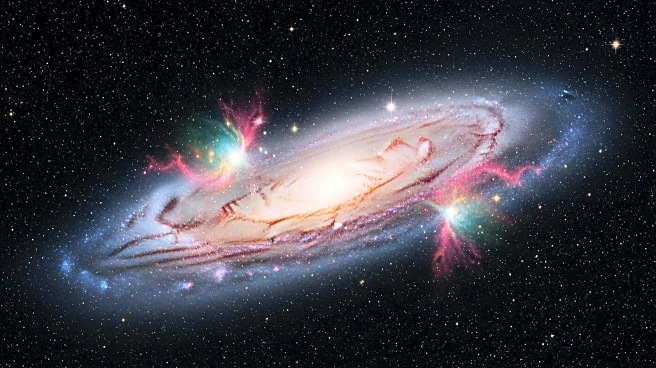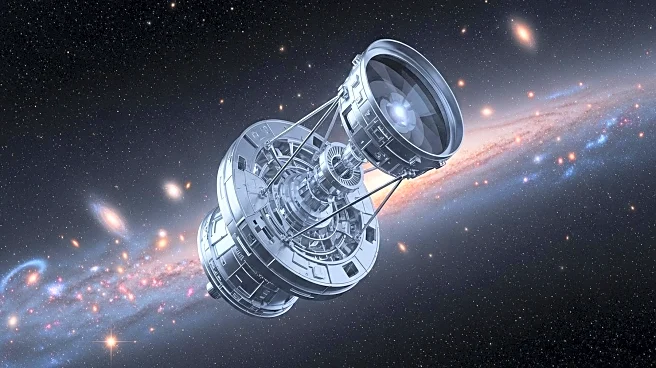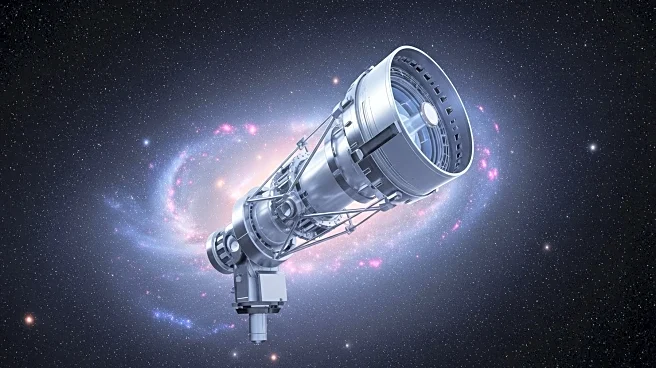What's Happening?
NASA is delving into the mysteries of dark matter, which constitutes about 27% of the universe's mass. Despite being invisible, dark matter plays a crucial role in shaping galaxies and cosmic structures. Scientists have been investigating dark matter since the 1930s, with significant contributions from astronomers like Fritz Zwicky and Vera Rubin. Current research focuses on understanding dark matter's properties and distribution, using techniques like gravitational lensing to map its presence in the universe.
Why It's Important?
Understanding dark matter is vital for comprehending the universe's structure and evolution. It influences the formation and behavior of galaxies, impacting cosmic phenomena and potentially offering insights into fundamental physics. NASA's research on dark matter could lead to breakthroughs in astrophysics, enhancing our knowledge of the universe and informing future space exploration missions.
Beyond the Headlines
The study of dark matter also raises questions about the nature of the universe and the potential existence of unknown particles or forces. It challenges existing scientific paradigms and encourages the development of new theories and technologies to explore cosmic mysteries. As research progresses, dark matter may reveal deeper insights into the universe's origins and destiny.











